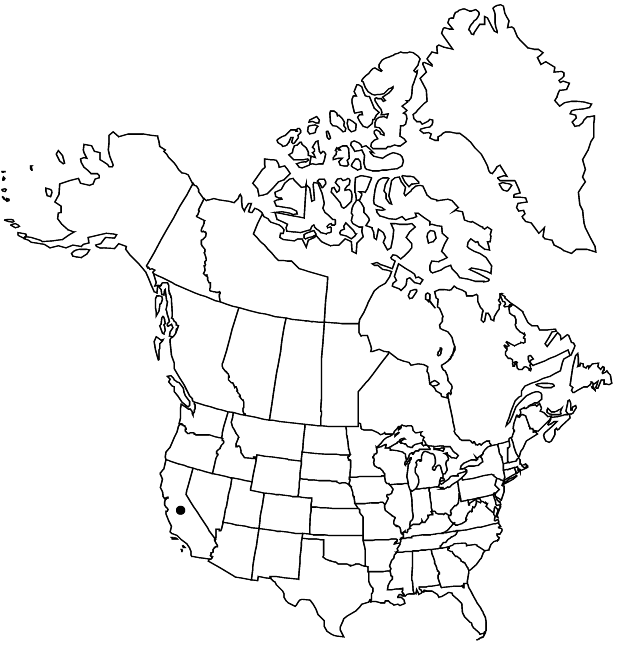Arctostaphylos obispoensis
Leafl. W. Bot. 2: 8. 1937 ,.
Shrubs or trees, erect, 1–4 m; burl absent; twigs sparsely short-hairy. Leaves: petiole 5–7 mm; blade gray-glaucous, dull, oblong to lanceolate-ovate, 2–4.5 × 1–2.5 cm, base rounded to truncate or ± lobed, margins entire, plane, surfaces smooth, appressed gray-canescent, glabrescent. Inflorescences panicles, 2–4-branched; immature inflorescence pendent or ascending, (branches curved, bell-shaped), axis 1–2.5 cm, 1+ mm diam., sparsely short-hairy; bracts not appressed, leaflike, linear-lanceolate, 7–14 mm, apex acuminate, surfaces appressed-canescent or glabrous. Pedicels 8–10 mm, glabrous. Flowers: corolla white, conic to urceolate; ovary glabrous. Fruits depressed-globose, 9–14 mm diam., glabrous. Stones distinct. 2n = 26.
Phenology: Flowering winter–early spring.
Habitat: Chaparral, open, closed-cone conifer forests
Elevation: 200-700 m
Discussion
Arctostaphylos obispoensis is found in the southern Santa Lucia Mountains on serpentine soils in Monterey and San Luis Obispo counties.
Selected References
None.
Lower Taxa
"entire" is not a number.
